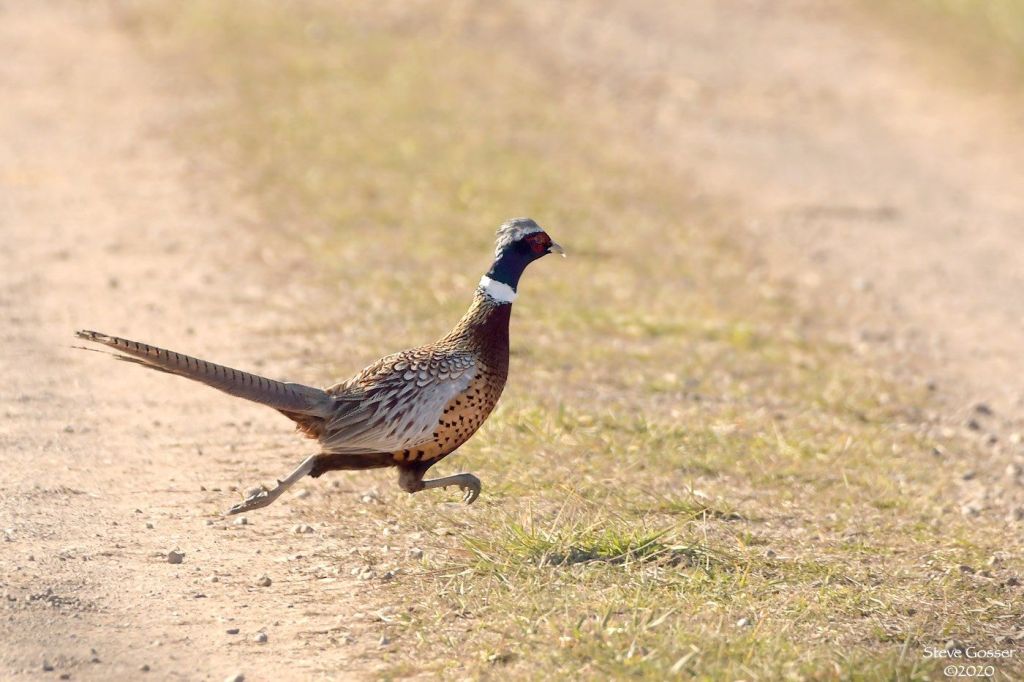
Thanksgiving Day, 26 November 2020
This month bird photographer friends Steve Gosser and Cris Hamilton have not taken many pictures of wild turkeys in western Pennsylvania but they have certainly found photogenic ring-necked pheasants. As Steve said on Facebook:
The last two weekends I’ve been driving around everywhere trying to find some of the rare winter finches currently moving down through our area, but all I keep finding are Pheasants.
— Steve Gosser on Facebook, 15 November 2020
Males pheasants are bold and colorful with blue head feathers that they can raise like horns (click here to see).
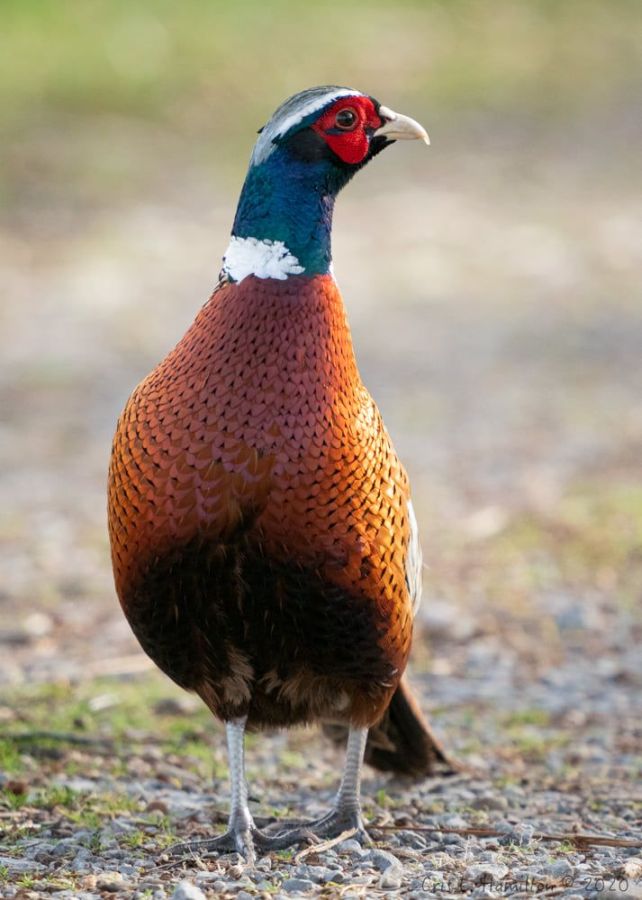
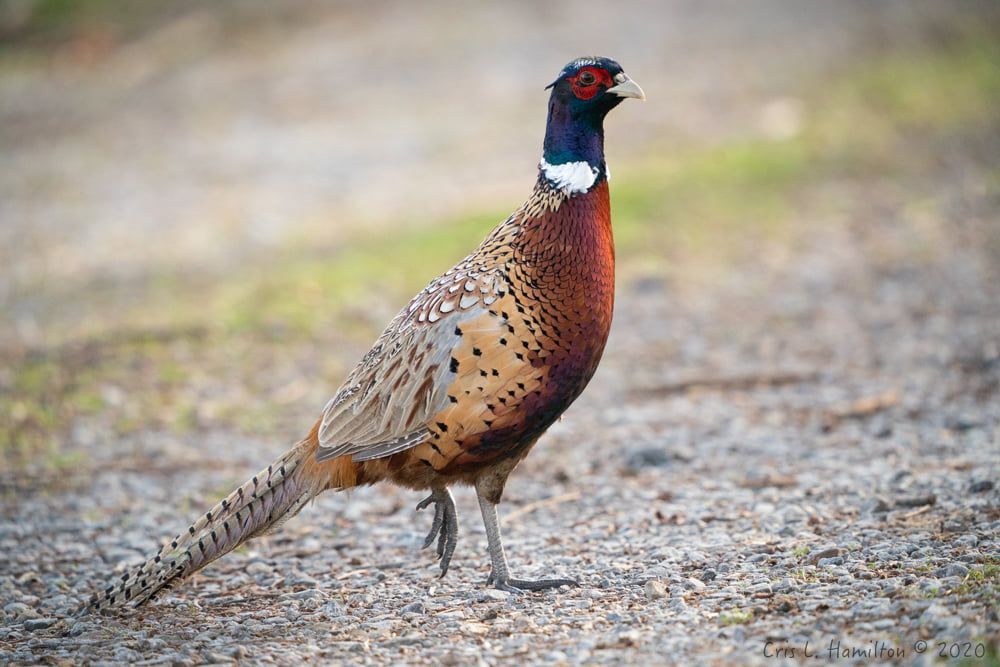
The females are brown but not boring. Both sexes perk up when a human appears on the scene, pausing and staring as if to say, “What is that person doing?” Sometimes they run.
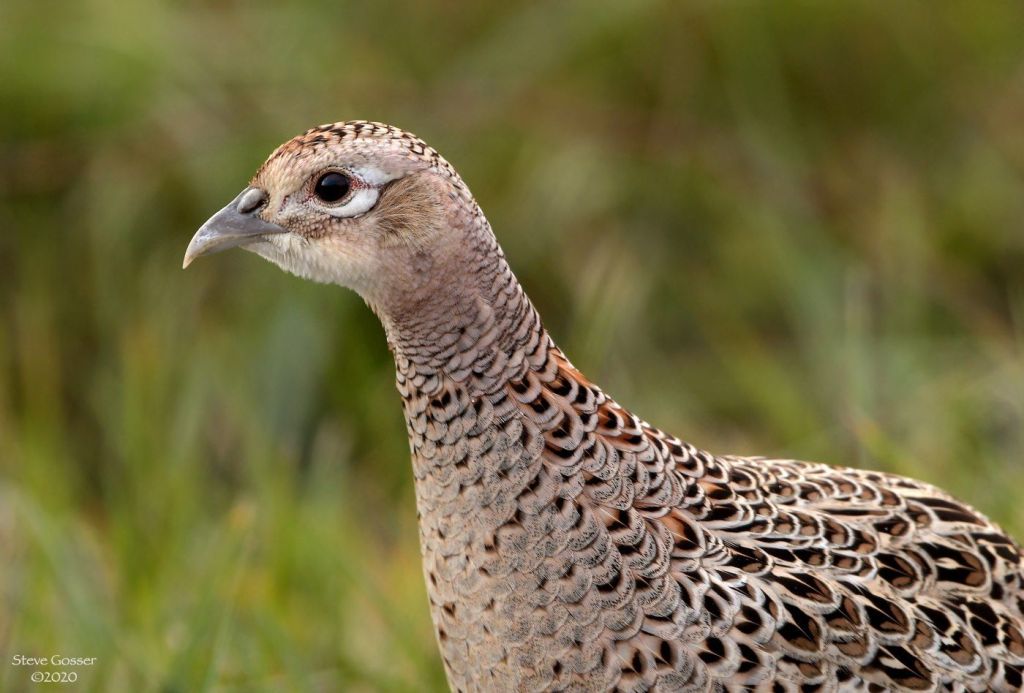
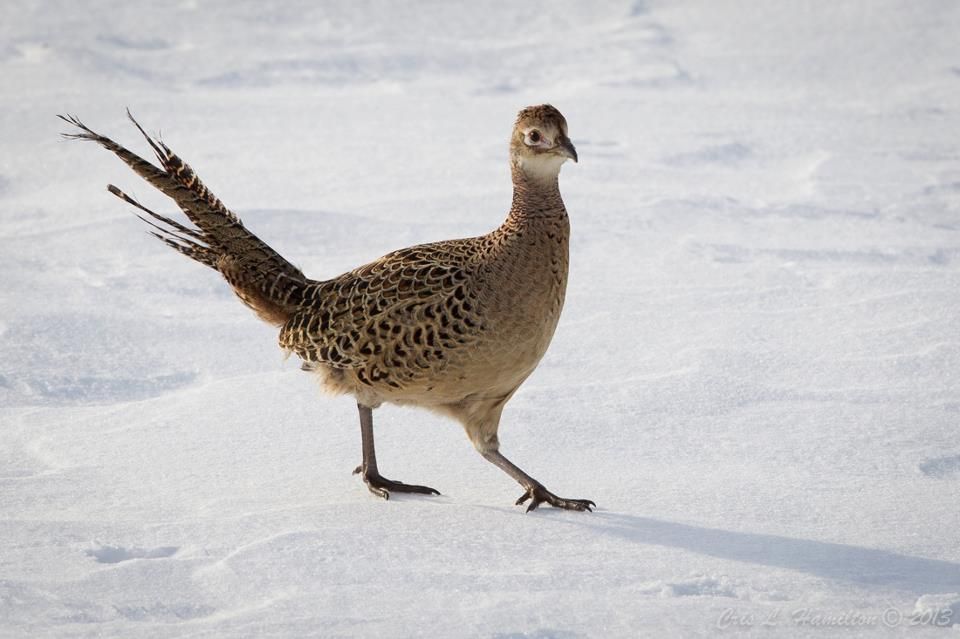
Native to Asia, ring-necked pheasants (Phasianus colchicus) were introduced as game birds in Europe, North America, Hawaii, Australia and New Zealand (see map). They’ve never become invasive because the pen-raised birds lack the survival skills they need to make it long term in the wild. Pausing to stare is probably their downfall.(*)
Why are ring-necked pheasants so plentiful in western PA? They’re stocked every year by the Pennsylvania Game Commission. Here are some high counts of ring-necked pheasant releases in 2019:
- 1,470 at SGL 203 in Marshall Twp Allegheny County
- 3,640 at SGL 95 (The Glades) in Butler County
- 1,920 at SGL 284 (Schollards Wetlands / Pennsy Swamp / Black Swamp) in Mercer / Lawrence County
Click on the screenshot to see the interactive map of 2019 pheasant releases or here for the list of releases in 2020.
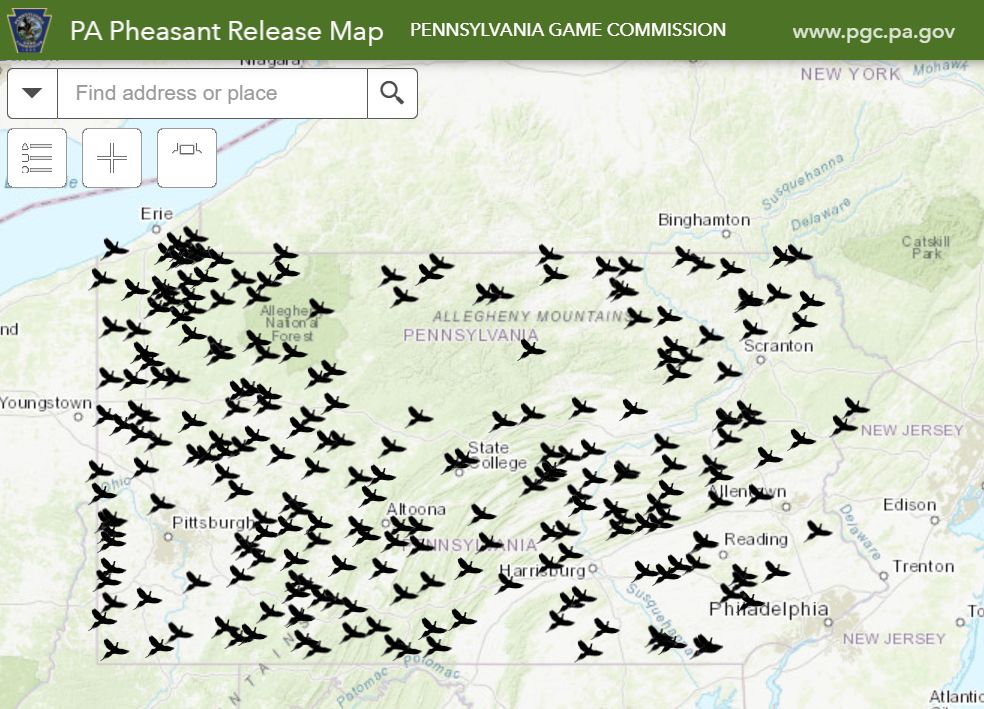
Cheers to ring-necked pheasants.
Happy Thanksgiving!
p.s. I’m thankful for all the photographers who let me use their photos. These are by Steve Gosser and Cris Hamilton.
(*) Pheasants are birds of open land. They did well when much of Pennsylvania was farmland but now that the state has reverted to forest wild turkeys are doing well and pheasants are not.
Beautiful pictures, thank you for sharing, Kate. And wishing you and yours a wonderful and safe Thanksgiving.
I remember on a birding trip to North Dakota we visited a National Wildlife Refuge. There was no limit on the number of pheasants that you were allowed to kill. The reason was that the pheasant lays its eggs in the Sharp-tailed Grouse nests. Like the cowbird, the pheasant eggs hatch quicker and the grouse ends up leading a bunch of pheasant chicks.
In Washington state we have self-sustaining populations on the east side but not on the west side. The west side is much wetter and doesn’t have large scale grain cultivation like the east side. The populations along the irrigated river valleys in eastern Washington are stable. The access to cultivated grain fields in the winter seems to be crucial for viable pheasant populations.